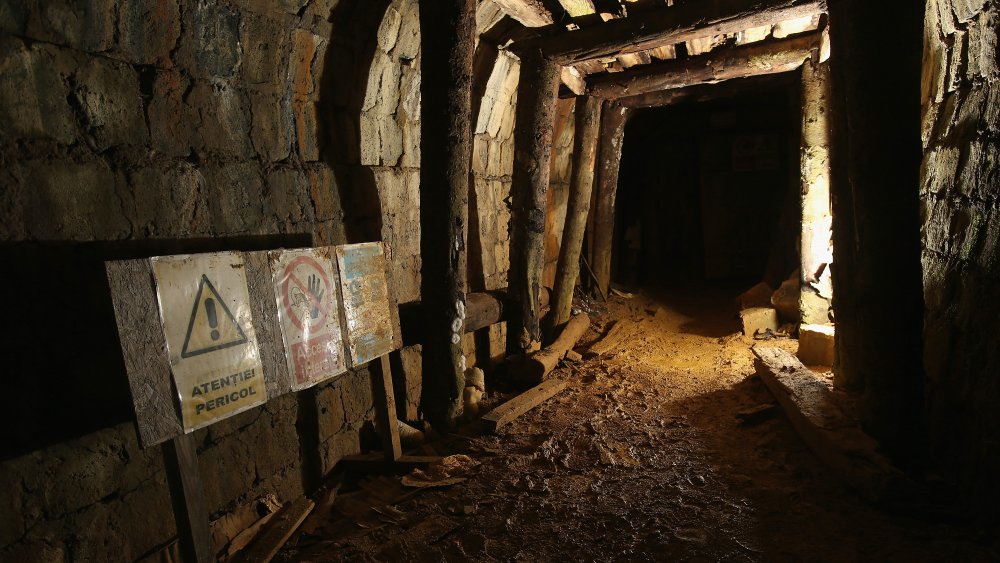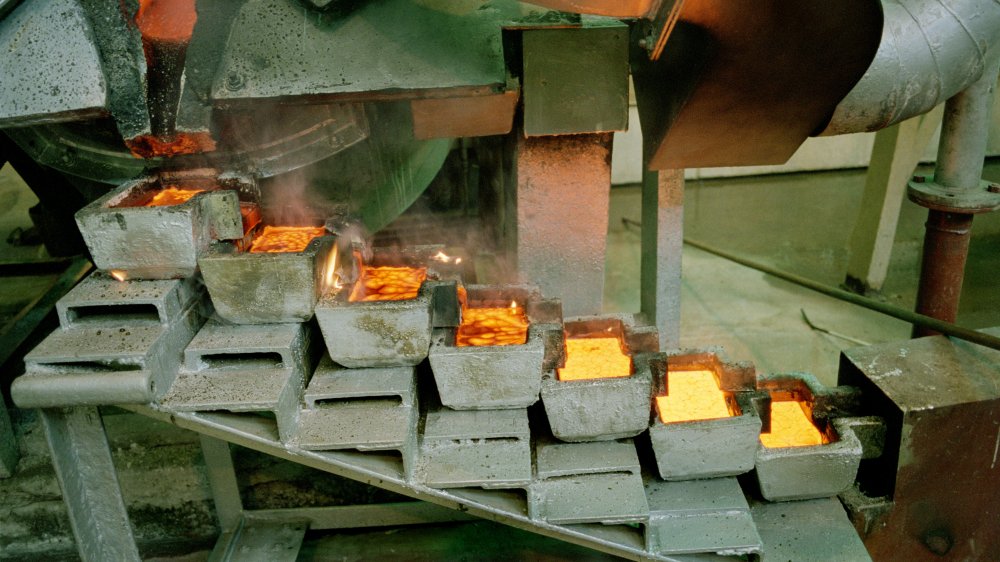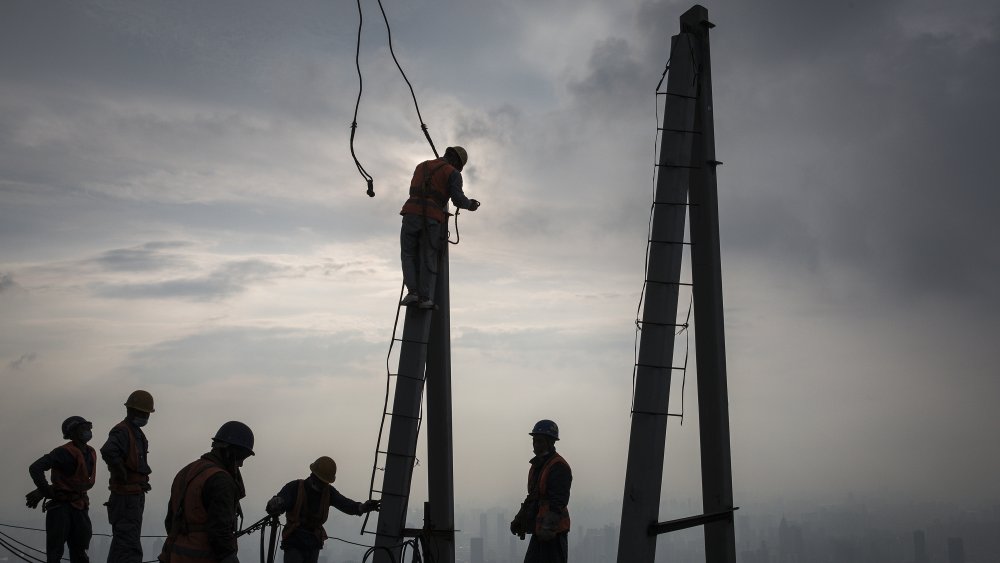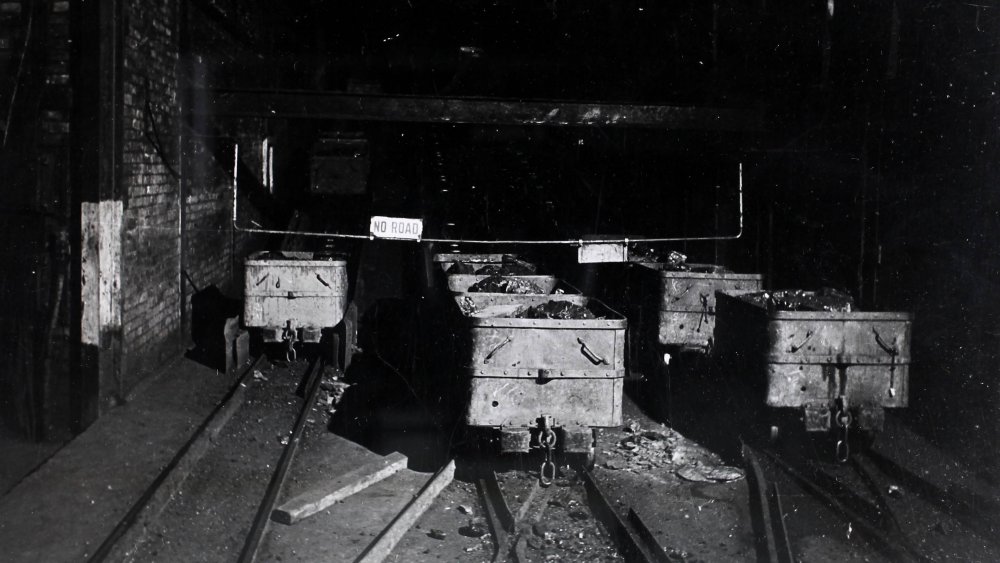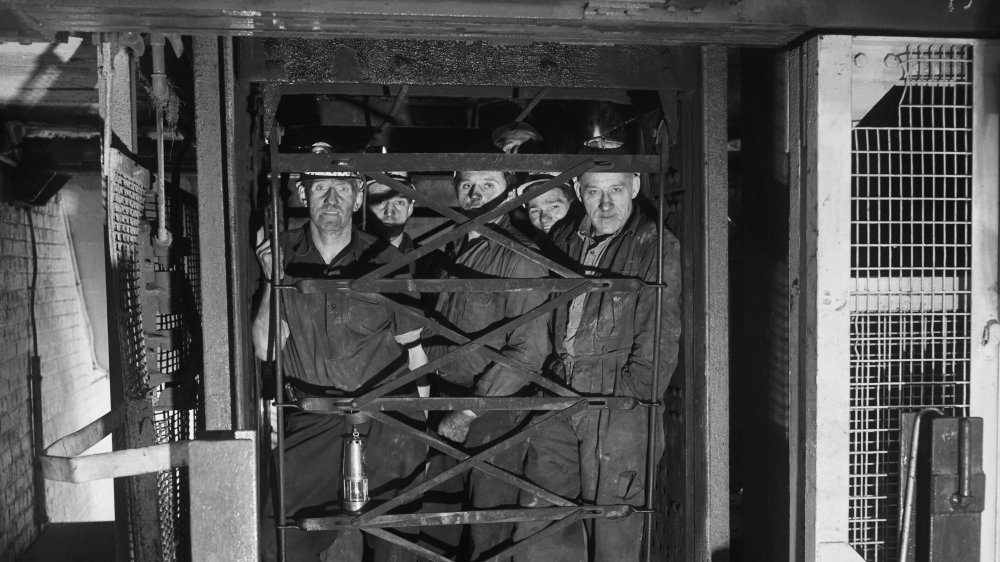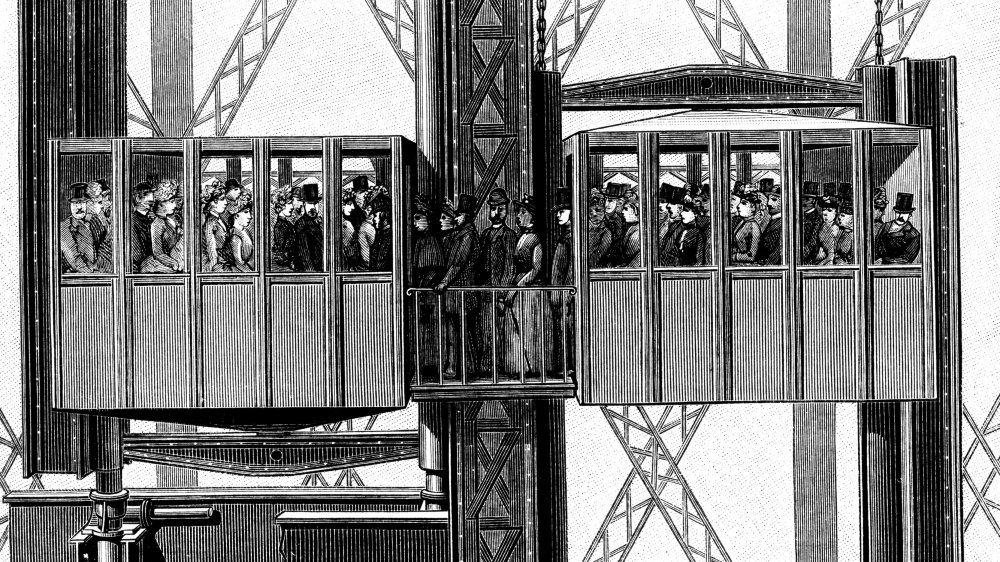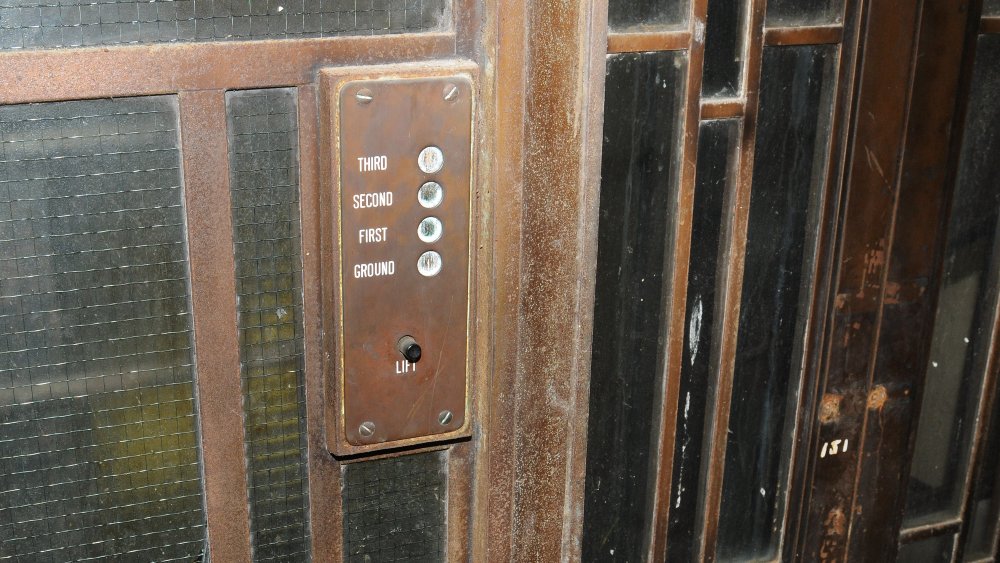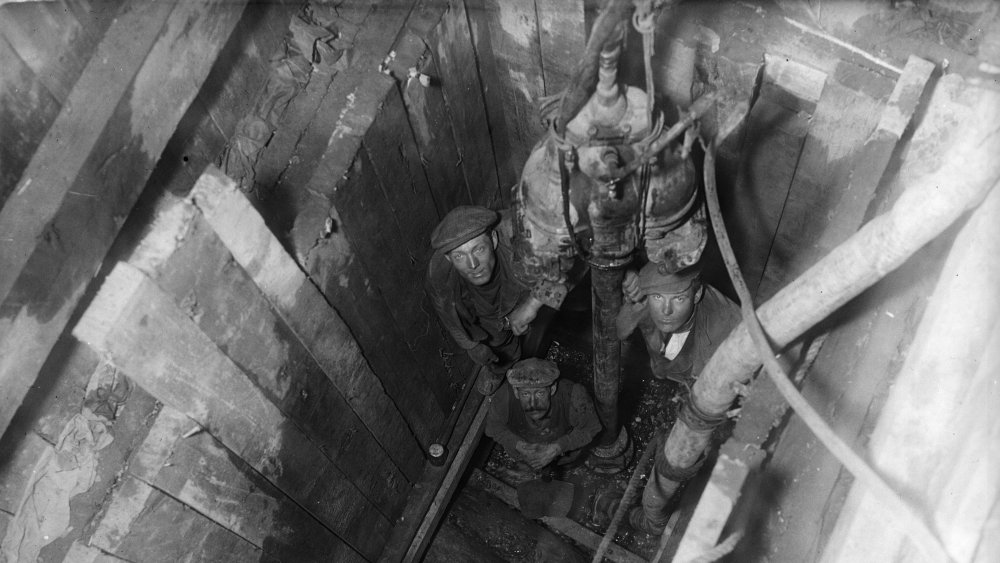The World's Deadliest Elevators
As humanity spread outward in cities starting in the 19th century, they ran into a problem of real estate. There's only so much room on the ground to build stuff, so before long, taller buildings became a necessity. Therein lies another problem, though: Who wants to walk up all those stairs?
In the early days of apartment rentals, top-floor apartments were actually the cheapest because nobody wanted to climb all the way up there every day. Then, the elevator came along, and suddenly the top floor was the most lucrative because it was further away from street-level noise.
Elevators didn't just revolutionize housing, though. They ushered in the era of the skyscraper, with dozens or even over a hundred floors. That also means you're in a small box hundreds or thousands of feet off the ground, and when things with an elevator go wrong, the only place to go is down.
Hundreds died in the World Trade Center elevators
On September 11, 2001, terrorists hijacked four commercial airplanes, and two of these they commandeered and flew directly into the twin towers of the World Trade Center in New York City. If you were alive then, you might remember exactly where you were and what you were doing when you found out, a so-called flashbulb moment. Needless to say, things changed a lot after that day.
Of the thousands who died in the initial impacts and subsequent collapses of both towers, around 200 to 400 deaths were estimated to have occurred in one of the two buildings' 198 high-speed elevators, some stretching from the ground floor all the way to the 110th floor, according to USA Today. Many elevator shafts were damaged by the initial impacts, and experts have determined that many of the elevator-related deaths that day probably occurred then.
Some people were trapped in elevator cars that stopped working when they were damaged. For those unfortunate people, they either had to wait until the buildings collapsed entirely or until the fires got to them. All told, only about 100 people actually managed to escape from elevators on September 11. In fact, the elevator shafts of the World Trade Center buildings were found by experts to have aided the fires in spreading after the fact. A big elevator shaft is a perfect chimney for drafts that can make fire spread quickly through a large skyscraper.
The time a train landed on a moving elevator
About 112 miles southwest of Johannesburg, South Africa lies the small town of Orkney. It doesn't have a lot of residents, but what it does have is a huge gold mine known as Vaal Reefs. It was in shaft #2 of this gold mine that one of the deadliest elevator accidents in history occurred.
On May 10, 1995, a train used to transport materials to, from, and around the mine went off track, smashed through a safety barrier, and sped right toward an open mine shaft. Investigators later found that the mine had no safety devices in place to prevent trains from falling into the mine shafts. Furthermore, the hook attaching the train car to the rest of the train opened, causing the train to free fall into the shaft, according to Minerals Council South Africa.
After falling 1,700 feet, the train collided with a large elevator cage designed to carry around 100 people down the mine shaft, and then both the train and elevator car tumbled the remaining distance to the ground, nearly half a mile. The personnel elevator car, normally two stories tall, had been crushed down to a single story, and it had been full of workers at the time of the crash. Everyone on board the elevator, 104 people all told, were killed in the accident. 400 workers already working at the bottom of the shaft were evacuated safely, however, according to the Associated Press.
A woman was trapped in a broken elevator for over a month
For an elevator accident that had far fewer casualties, but was still completely terrifying, look no further than a story out of Xi'an, China from March of 2016. A group of elevator maintenance men at an unnamed apartment complex returned from Chinese New Year, the biggest holiday of the year in China. It's not uncommon for people to take off weeks or, in this case, even a whole month to celebrate.
Before leaving for the holiday, the workers discovered one of the elevators was broken, so they took it out of service and brought it to the first floor, intending to work on it after they returned, according to the LA Times. But when they did come back and examined the elevator, they discovered something horrifying — they had mistakenly trapped a woman inside when they took the machine out of service. Although property managers said that the maintenance team had confirmed the elevator was empty before shutting it down, it seems that this didn't actually happen.
The woman, only identified by the name Wu, had been stuck in the elevator the entire time and had starved to death as a result. Creepiest of all, when her body was found, her hands were discovered to be badly injured. It seemed she had spent at least some of her time trying as hard as she could to pry the elevator doors open in a desperate bid for survival.
An explosion severed an elevator cable
Around 50 miles south of the Vaal Reefs gold mine in Orkney, South Africa, where 104 workers lost their lives in a mining elevator accident, is the town of Welkom. Much like Orkney, one of its biggest industries is gold mining. With gold mining, as in most forms of mining, elevator accidents aren't actually common enough to be a big concern. What is, however, is the buildup of gasses that might be toxic or even explosive.
On August 31, 1987 at Welkom's St. Helena gold mine, an explosion from just such a buildup ripped through a part of the mine, killing 10 workers, according to the Associated Press. This was caused by a buildup of methane gas, which is highly explosive. The explosion also severed the cable of a mining elevator. The elevator car was sent plummeting down shaft 10, a 4,521-foot pit and just one of many like it, according to UPI. Afterward, it was estimated that the car fell about 1.4 km, or nearly a mile, to the ground. All 52 workers on the elevator were killed, bringing the death toll to 62.
300 workers also working down the shaft managed to escape, including one person dubbed the "solitary rescuer," according to Minerals Council South Africa. This rescuer managed to save several injured workers while hanging from a rope, and while their name isn't in any official sources, they were awarded a well-earned medal for bravery.
An overloaded elevator drops people 30 stories
Construction accidents are no joke, and a great many of them are preventable by following safety instructions. If you've ever had to sit through one of those gory work safety videos, you probably have some idea of what industrial accidents can do to people. Over the last few decades, however, China's record in this regard has been less than great, according to the South China Morning Post.
On September 13, 2012 at a construction site in Wuhan, witnesses say they saw a construction elevator loaded with workers rise very quickly to the building's top, followed by the cable snapping and the elevator car falling all the way back down. The 19 people on board dropped 30 stories to the ground, killing everyone in the elevator. In the aftermath, investigators found that the registration plate on the elevator was still readable — its registration had expired three months before and was only rated for a capacity of 12 people, according to People.cn.
Local authorities immediately halted all construction in the province (no mean feat in and of itself) to perform safety checks. It seems that no long-term changes were made, or we at least not terribly effective, however, as construction continues to be the deadliest job in China and there are signs that it's only getting more dangerous as the country seeks further rapid urbanization, according to China Labour Bulletin.
The Lancashire Pit Disaster
Mining is already dangerous enough, what with the risk of cave-ins, toxic gases, and the possibility of long-term illness. Equipment malfunctions, such as elevator accidents, are a whole other ball game. And while there are all sorts of safety requirements today, just imagine how things must have been a century ago, when "work safety" was a metal helmet and a firm handshake.
On October 10, 1932, England had one of its worst mining accidents, later dubbed the Lancashire Pit Disaster, according to the Northern Mine Research Society. Electric elevators were a thing, but since running electricity to mines wasn't terribly common yet, miners relied on elevators powered by steam engines and operated by a human, such as the one in Bickershaw Colliery, a coal mine in Lancashire, England.
When a safety device called the "visor," designed to prevent the elevator's engine from winding the rope too tightly, malfunctioned in shaft number three, the rope tightened until it snapped, sending an elevator with 20 men plummeting into the 14 feet of water collected at the bottom of the shaft. Because the elevator was designed as a cage, the workers were unable to escape and drowned, save one man, who happened to be close enough to the gate that he got it open and was able to swim to safety.
The sheer terror of the paternoster elevator
While elevator accidents can happen at any time, there are some elevator designs that are inherently bone-chilling. Are you afraid of heights and claustrophobic? There's an elevator just for you! Called the paternoster (based on the Latin for "our father" due to its resemblance to a string of rosary beads), this elevator design is honestly a straight-up death trap, which is why so few of them exist today.
They can still be found in a few places in Europe, however, and you can even find videos of people riding in them. First, imagine a regular elevator, but instead of a car with doors that close, it's a series of open, continuously moving booths, one side up and one side down, according to Smithsonian Magazine.
There's no button, you simply step into the phone booth-sized box. When you get to the floor you want, you step back out of the booth. And yes, the interior elevator wall is visible the whole time. Thing is, getting into a booth too early means you might fall. Getting out too late runs the risk of serious injury, as body parts (or entire bodies) can and have gotten caught between the moving booth and the floor or ceiling outside. These elevators are so wildly unsafe that Europe has actually passed laws banning the construction of new paternosters.
The elevator crash that happened even with 14 failsafes
You might think, as the decades rolled by, that mining elevators might start to rely less on steam. Not so, because on July 30, 1973, another steam elevator experienced an overwind that sent people falling to the bottom of a pit. At Markham Colliery, another coal mine, near Chesterfield, England, an elevator cage carrying 30 workers dropped 1,329 feet, according to The Story Mine.
Thankfully, some of the workers on board survived. 13 men died at the scene, and another five died later at the hospital, for a total of 18 fatalities. The other workers in the cage didn't get off easy, though, as they (and one rescue worker) were seriously injured. The elevator operator, actually very experienced in running such equipment, was reported to have gone into shock after the accident.
What's more, upon further investigation, it seemed that the elevator had 14 separate failsafe mechanisms which were supposed to make a crash like this impossible, but somehow each one of them failed to stop the crash. The incident triggered a complete safety review of the coal mining industry in England, something that had actually been proposed by the Yorkshire Divisional Inspector of Mines and Quarries just days before the Markham Colliery accident.
The mystery elevator accident that killed a dozen
Chinese construction site safety standards tend to be questionable at best, as the focus is more on getting things made cheaply and quickly than on getting it done with a minimum of casualties. This is perfectly encapsulated by a story out of Fujian Province on October 30, 2008. An elevator at the work site for a residential building collapsed and killed a dozen workers at the early hour of 6:40 am, according to the BBC.
What's striking about this is, despite being one of the deadliest elevator accidents in history, the story barely got a mention in most news outlets, and even the ones that did report on it also made it a point to add a few lines noting that Chinese safety standards are woefully lax. It's actually pretty difficult to find more information about the accident because Western news agencies were given the bare minimum of information by Chinese authorities. What caused the elevator to fall? We simply don't know.
It's also worth noting that in the very same week, another accident occurred at a construction site in Chongqing where 11 people died and 12 were injured when a crane collapsed, making this a particularly dangerous week for Chinese construction workers, according to UPI.
Every elevator before Elisha Otis was deadly
One of the biggest brands of elevators you'll see (if you pay attention to that sort of thing) in buildings are the ones made by Otis Elevator Company. Next time you're in an elevator, check for a brand somewhere inside the cab. There's an excellent chance it's made by Otis. So why is that company such a big deal? Simple, Elisha Otis was one of the pioneers of elevator design. While such things did exist before Otis, they were typically operated by ropes and pulleys that were tugged on by a regular human.
As you can imagine, these basically had zero safety protocols. If the rope snapped, if the person pulling your elevator up got hurt, or if the wind blew just the wrong way, there was a pretty solid chance you'd end up injured or, more likely, dead. Thus, these early elevators mostly moved things and not people. Take dumbwaiters, for example.
But Elisha Otis set out to change that by inventing the very first elevator emergency brake, according to Time. Using simple components like an old wagon spring, Otis successfully figured out how to halt a falling platform if the rope carrying it broke. Elevators became far more common after Otis' invention hit the market.
A rail-based elevator in China killed 12
One exception to the overarching statement that Chinese safety regulations are insufficient is construction in Hong Kong prior to its 1997 repatriation to China. Among many other differences under British rule and Chinese rule, safety standards were at least somewhat higher at the time. How much higher is up for debate, of course, and not something that's feasible to cover in a list about elevators instead of Chinese politics, but suffice to say, things were somewhat different.
On June 3, 1993, a work site in Hong Kong had its elevator collapse, falling 17 stories and killing 12 workers, one of whom was only 16-years-old and working while on holiday from school, according to the South China Morning Post. What's a bit different about this elevator crash is how the elevator actually operated. Instead of using cables, this elevator used a series of gears, whose teeth hooked into a vertical rail built into the building.
It turned out that the elevator, only rated to carry eight people, had been overloaded, which caused the mechanism to fail. While a safety brake was supposed to engage to prevent a complete drop, this also failed. Some of the workers were actually still alive at the bottom of the shaft, and firemen rescued them using a specialized set of cutting tools that, coincidentally, they had only just received two days earlier. Sadly, these survivors later died at the hospital.
Elevators are deadliest to the people who work on them
While elevator deaths do still occur every year, even with leaps and bounds in safety, the majority of those deaths don't happen to elevator passengers, but the people that install and maintain them. When you hear about an elevator accident in the news, you're only hearing about it because those kinds of accidents are now thankfully very rare.
People who have to get close to the elevator's inner-workings, however, are far more likely to be seriously injured or killed, according to Fieldboss. Some of this is due to more exposure, as elevator repairers and installers are around them all day at work, but also because a regular passenger will likely never get close to the machinery that makes the elevator run.
But if you're still worried about your safety in elevators it's worth keeping one fact in mind: Far more people are killed on stairs each year, according to LiveScience. This is, again, partially due to exposure, as your average person will encounter far more stairs than elevators in a day, but the much bigger factor is that, when it comes to stairs, no new safety features have been invented since the handrail. If you fall down some stairs, there's basically nothing stopping you from being hurt. If a cable breaks in an elevator, it's very likely that the emergency brake will save your life, and you don't have to get all out of breath, too.


